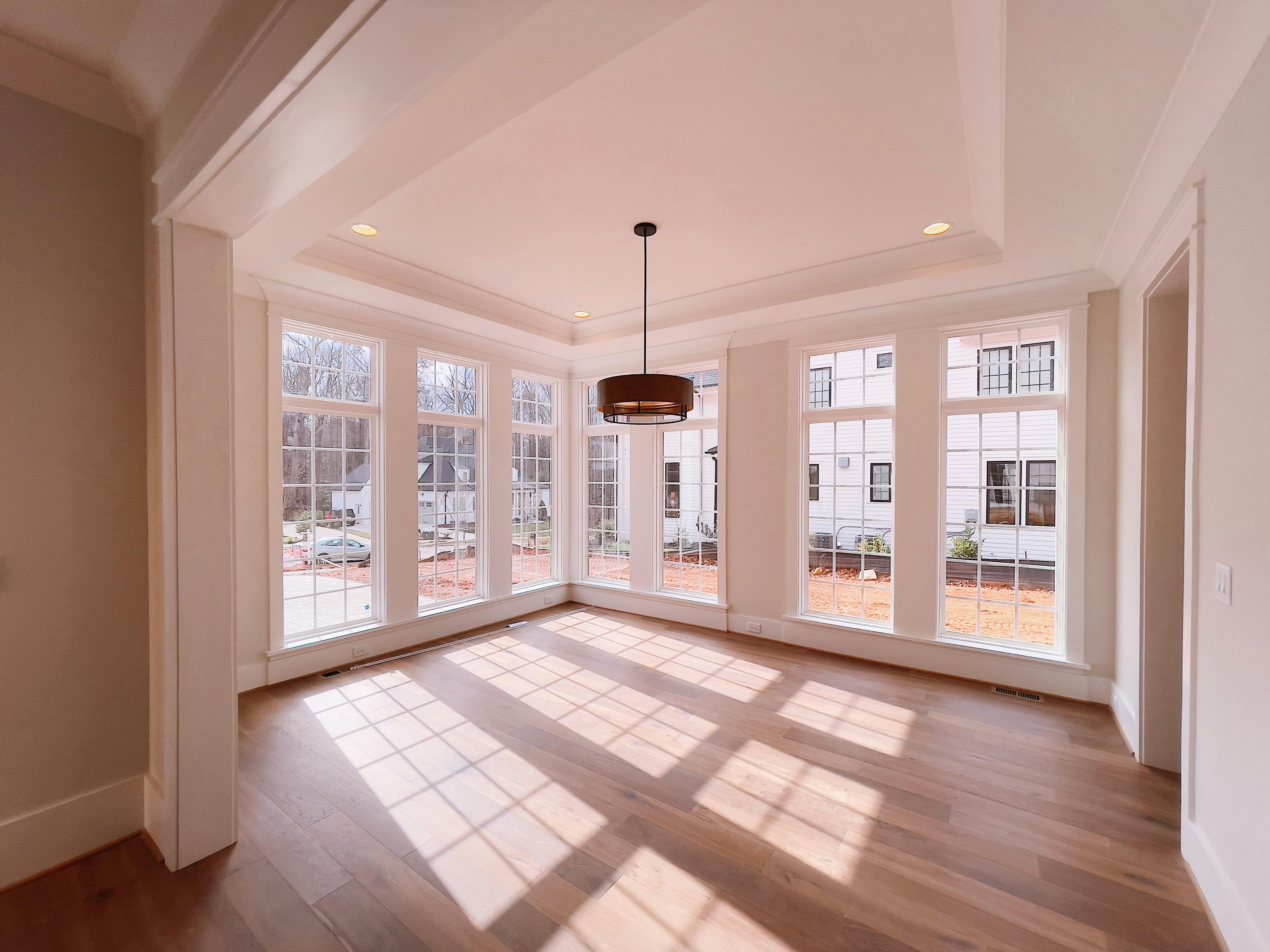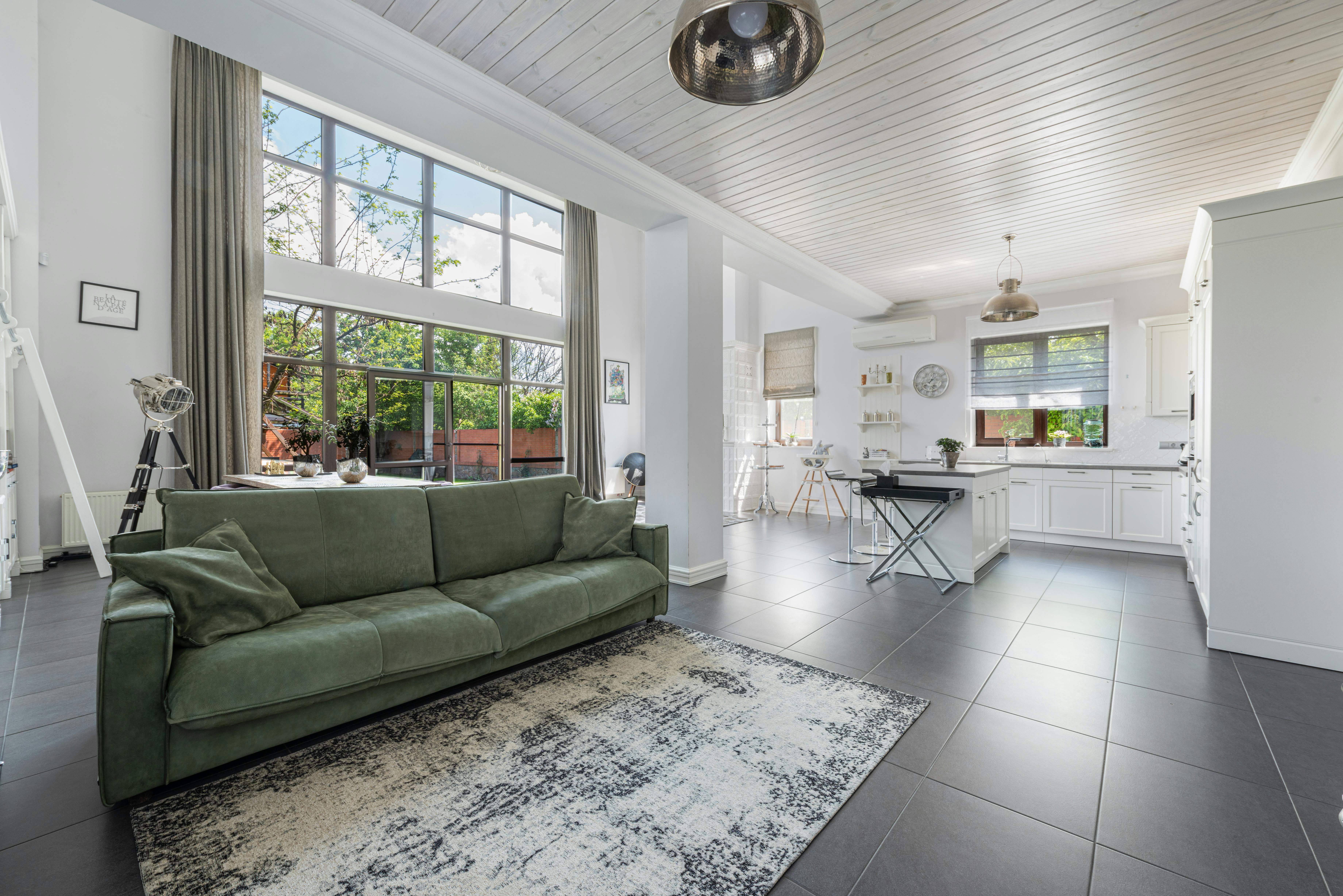Transforming existing raw space into an additional bedroom, game room, or master or guest suite is an affordable way to add to your home. You can also winterize a sunroom or unheated porch to transform a two- or three-season room into a year-round retreat. You can transform a two-bedroom, two-bathroom home into a “new” three-bedroom, three-bathroom home simply by making your unused space available!
Be your own project manager
Finishing the existing raw space in your home to make it livable requires the help of specialists in various trades: plumbing, carpentry, electrical, and others, including flooring and possibly stoneworking for tile work. So while it’s not a do-it-yourself job, you can manage the project yourself and become your own general contractor. That way, you’ll save money and choose and work with merchants you really like. Managing the project gives you tremendous control over staffing, quality control, and finishes. You are the boss! Here are the basic steps you’ll want to follow:
set aside some time
Expect to spend anywhere from 1 to several hours a day for several months dealing with some aspect of the renovation. Managing the transformation of any space in your home doesn’t require you to be on site every minute, but you do need to check in frequently, inspect work as it progresses, pay bills, consult with on-site merchants, coordinate and schedule merchants who need to enter, make sure the site is organized safely and in a way that protects workers (and therefore your liability), manages garbage disposal, and resolves issues.
Determine your budget
Every decision you make is based on your budget, from how much to spend on flooring to how stylish you want your bathroom fixtures to be.
Decide how you want to use the space
Will it be an additional bedroom and bathroom, a family room, or a children’s playroom? The feature will help inform many of the finishes you choose. For example, a children’s playroom may benefit from a hardwood floor partially covered by a large rug. How elaborate do you want the bathroom to be? If you are transforming a space into a master suite, the bathroom should have dual vanities and a glass shower enclosure, which should have additional showerheads on the wall and overhead.
Gather the right professionals
Several professionals are involved in an extension project. They include:
architect
Carpenter and/or drywall contractor
flooring contractor
licensed electrician
air conditioning specialist
licensed plumber
Window vendor/installer
As a project manager, you coordinate the work, schedule, and budget. Jobs must be completed in a particular order. Follow this general timeline:
prepare the soil
Check the condition of the subfloor and existing floor joists. If you are finishing a foundation, you should inspect the condition of your floor. Most foundations have poured concrete floors and are sometimes steeply sloped for drainage purposes. If that is the case, the floor must be level before proceeding with the work. A handyman or contractor must pour a thin layer of concrete to level it. Be sure to maintain access to all existing floor drains! Drains must remain functional in the event of basement flooding. Check with a plumber to find out if you will be required to periodically pour water to them to prevent sewer gas from building up.
Install any necessary HVAC systems
The ducts are cumbersome. In basements, where ceiling height is always a consideration, soffits may be required to cover any vents running above, which can lower the ceiling. Basements are usually cool and may not require air conditioning systems. However, they require heating. Make sure the HVAC specialist locates supply ducts close to exterior walls. Install return air ducts on interior walls or ceilings away from supply ducts. The idea is to “draw” air through the room. Particular attention should be paid to the ventilation, heating and cooling of attic rooms.
install plumbing
You can also fix plumbing issues in other parts of your home at this time, if necessary. If the existing drain chimneys in the house are made of PVC, they should be wrapped with insulation to minimize sound transmission. You may need to insulate your cold water lines if you’ve had problems with condensation in the past, as it can drip onto your new roof. Ask the plumber to do some preliminary work on the bathroom plumbing so he can come back later to install the fixtures. Raw plumbing is all plumbing components that must be installed before finishing workers (drywall contractor, painter, etc.) come in to do their work, including any waste and water supply lines found on the walls or structure of the building. . Ask the plumber to use ½-inch or 1-inch lines instead of the more common ¼-inch lines in the bathroom for added water pressure.
Have the necessary electrical work done
All electrical work must be done in accordance with the National Electrical Code or the code adopted by your community. Don’t skimp on the electrical system. Make a list of everything you plan to use in the room (appliances, light fixtures, electronics, etc.) so the electrician can calculate the required load and make sure you have enough circuits. He or she can install the wiring for the ceiling light fixtures at this time and reinstall the light fixtures when the drywall or drop ceiling is installed. Think about the future. Make sure you can access the main electrical service panel and telephone and cable TV termination points. Have the electrician install conduit through which additional wires can be run at a later date. Don’t forget to wire the space for surround sound.
Install cable and telephone lines.
Call your utility companies and schedule a time for them to add new phone, data, and wiring cables. Make sure they add extra phone and data lines now, even if you don’t plan to use them all right away. Adding them later is more expensive.
Build and insulate the walls.
A carpenter can install 2 x 4-inch studs if they aren’t already there, as well as a variety of thermal insulation materials, from traditional soft batting to rigid foil-faced sheets and blown insulation. He or she should be able to advise you on what is recommended for your geographic region and application.
install walls
You can choose one of several types of dashboards or panels. I prefer drywall because it gives you the most flexibility and doesn’t scream “finished basement” like paneling does. Plus, you can always apply wainscoting, faux finishes, wallpaper, or other treatments over drywall at a later date.
install the roof
I prefer drywall ceilings, but I admit that the ubiquitous, industrial-looking acoustic ceilings or false ceilings have come a long way. It now comes in a variety of styles, from beadboard to decorative raised styles that look like old-fashioned tin roofs. The advantages of installing a drop ceiling are that it creates an accessible tray for conduit and wiring, and if a plate is damaged, it’s easy to replace (buy 10 percent more than you need for coverage). The downsides are that it reduces ceiling height, which could be a big factor in your attic or basement. For drywall ceilings, the drywall contractor or carpenter builds soffits around the ductwork. That means making a drywall ceiling requires additional work and is therefore a bit more expensive than a drop ceiling, but the ceiling will be lower only in areas where ductwork exists and headroom is maximized in the ceiling. rest.
install the floor
I love hardwood, as you know. However, if you’re finishing a basement room, think twice before choosing a hardwood floor. Trade associations and wood flooring manufacturers caution against using traditional hardwood below grade, even on very dry subgrades. Instead, consider hardwood, laminate, tile, or carpet click flooring. If you are concerned about wet floors or insect infestation, install marine or treated plywood as an underlayment before proceeding with the final finish.
Install end fittings
Have the plumber and electrician return to install the permanent bathroom and electrical fixtures.
Paint trim and walls
Furnish your new rooms and enjoy them!
Reprinted from: Invest in Your Nest: Add Style, Comfort, and Value to Your Home by Barbara Kavovit © 2006 Rodale Inc. Permission granted by Rodale, Inc., Emmaus, PA 18098. Available where books are sold or direct from the publisher by calling at (800) 848-4735 or visit their website at http://www.rodalestore.com.
Posted by Rodale; June 2006, $19.95/CAN26.95; 1-59486-151-X
Copyright © 2006 Barbara Kavovit




